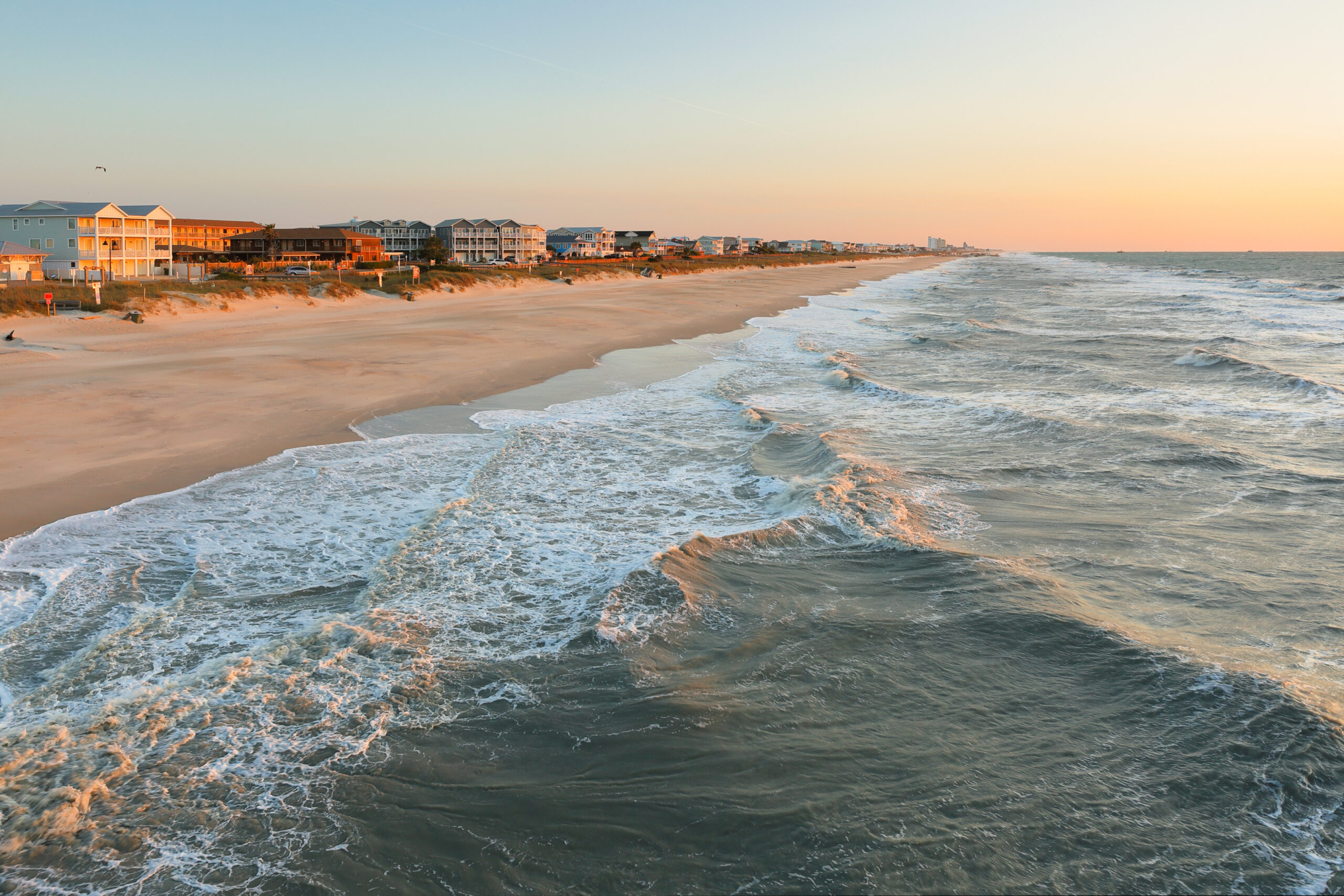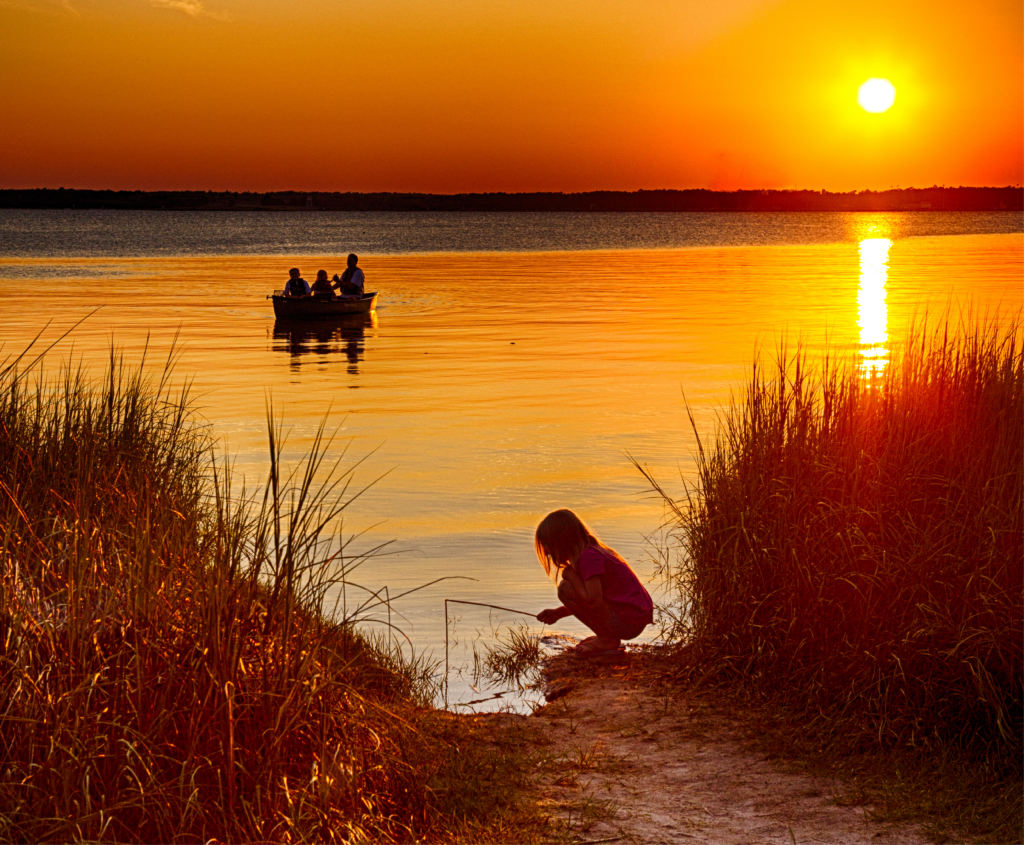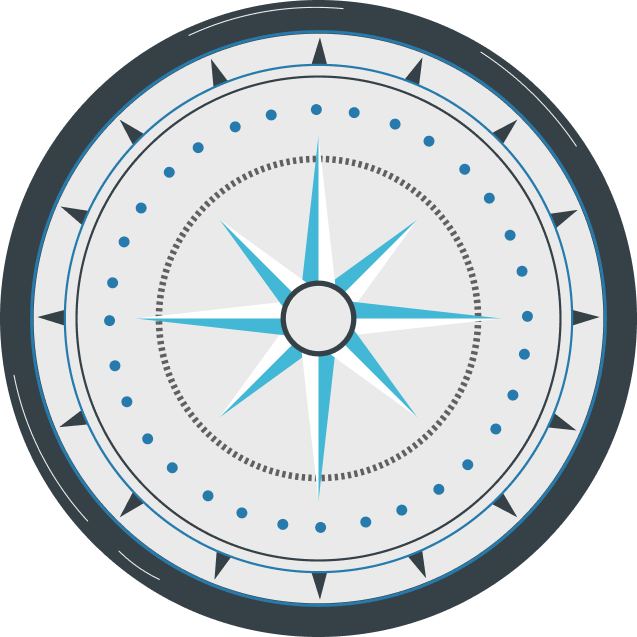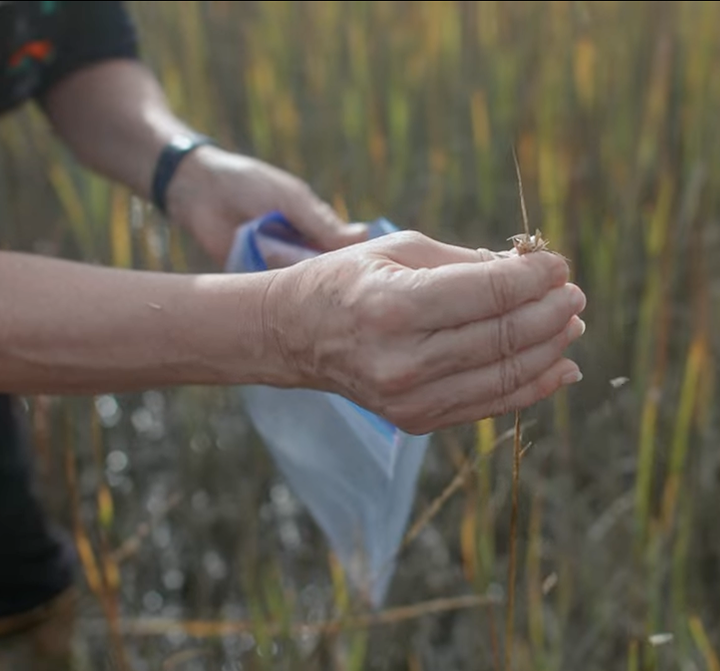
Coastal Restoration
in North Carolina
Coastal restoration and conservation of areas like tidal marshes, seagrass beds, and adjacent headwater wetlands are critical strategies to safeguard the health, safety and welfare of our natural and human communities where so many people live, work and play.

What difference do healthy coastal habitats make for North Carolina communities?
Coastal wetlands have a multi-billion dollar impact, from tourism to fishing
Healthy coastal wetlands support a variety of recreational activities such as fishing, bird watching, kayaking, and paddle boarding. These activities attract tourists and generate significant revenue for local economies. In 2023, coastal tourism in North Carolina generated over $7 billion in economic activity1.
Over 90% of North Carolina’s commercial fishery landings and 60% of its recreational harvest rely on species that depend on estuarine habitats, such as salt marshes and adjacent freshwater wetlands2. North Carolina’s wild-caught and shellfish mariculture commercial seafood industry contributes nearly $300 million annually to the state’s economy and supports around 5,500 jobs.3
Coastal wetlands are essential for sustaining the life cycles of many fish and shellfish species, which in turn support recreational fishing. In 2024, approximately 520,000 coastal recreational fishing licenses were issued, resulting in around 5 million coastal fishing trips and generating nearly $1.8 billion in economic activity in 20244.
Salt marshes provide storm protection, reducing storm surge impact and saving on property damage costs
A study published in 2022 found that salt marshes can reduce wave energy by up to 95% with as low as 50% vegetation cover5. This demonstrates the significant role of marsh vegetation in reducing wave energy and protecting coastal areas.
A 2017 study found that North Carolina properties with bulkheads suffered 93% of post-hurricane shoreline damage and incurred higher maintenance and repair costs compared to natural shorelines and revetments. Bulkhead property owners reported double the repair costs for hurricane damage and quadruple the annual shoreline maintenance expenses.6
Oyster reefs improve water quality
Coastal wetlands help naturally remove and store carbon
Coastal wetlands, including salt marsh, pocosin peatlands, and seagrasses, can sequester 10 times more carbon per acre than terrestrial forests.16 North Carolina has the largest extent of seagrass coverage along the Atlantic coast, measuring approximately 105,000 acres in 20138.
North Carolina’s coastal salt marshes and other fishery habitats hold approximately 48.8 million metric tons of carbon, resulting from hundreds of years of accumulation in their sediments9.
In 2021, the state’s seagrasses sequestered approximately 55,140 metric tons of CO2e in the soils alone, comparable to removing roughly 12,270 automobiles from the state’s roads for one year10.
What can be done with more funding for coastal restoration?
Purchase land for coastal conservation
Conserving undeveloped, natural areas helps maintain a coastal floodplain’s capacity to absorb and gradually release excess water, enhance water quality, support wildlife, and allow ecosystems to migrate in the face of climate change11.
Expand coastal wetland restoration
Increased resources can support the restoration of degraded salt marshes by planting native vegetation, removing invasive species, and restoring the natural water flow12.
Expand construction of living shorelines
More funding could expand the construction of living shorelines, which use natural materials like plants, sand, and rock to stabilize coastlines. These projects help reduce erosion, improve water quality, and provide habitat for marine life12.
Expand programs that focus on community involvement
Develop educational programs linking coastal restoration to clean water, storm protection, and recreational activities like swimming and fishing. This will help North Carolina residents understand the benefits and encourage their participation in restoration efforts.
Enhance research and monitoring
Additional funding can improve research and monitoring of coastal ecosystems, vital for adaptive management and long-term success12. The North Carolina Department of Environmental Quality emphasizes the need for accurate geospatial data for vulnerability assessments and flood zone workshops13. However, data gaps in data availability and quality hinder effective planning and restoration.
Click for References
1. North Carolina Association of County Commissioners. (2023). North Carolina counties: Spending from tourism in 2023. Retrieved from https://www.ncacc.org/wp-content/uploads/2024/09/09_2024_TourismSpending.pdf
2. North Carolina Division of Marine Fisheries. (2021). Coastal Habitat Protection Plan. Retrieved from https://files.nc.gov/ncdeq/Marine-Fisheries/coastal-habitat-protection-plan/chpp-steering-committee-meetings/042021/Wetland-IP-final-Draft-CSC—4-7-21.pdf
3. Sea Grant North Carolina. (2021). Demand for N.C. seafood and the commercial industry’s economic impact on the state. Retrieved from https://ncseagrant.ncsu.edu/demand-for-n-c-seafood-and-the-commercial-industrys-economic-impact-on-the-state/
4. North Carolina Department of Environmental Quality. (2024). 2024 Big Book of Fisheries Statistics. Retrieved March 24, 2025, from https://www.deq.nc.gov/marine-fisheries/science-statistics/fisheries-statistics/big-book/2024-cover-page/open
5. Castagno, K. A., Ganju, N. K., Beck, M. W., Bowden, A. A., & Scyphers, S. B. (2022). How much marsh restoration is enough to deliver wave attenuation coastal protection benefits? Retrieved from https://www.frontiersin.org/journals/marine-science/articles/10.3389/fmars.2021.756670/full
6. Smith, C. S., Gittman, R. K., Neylan, I. P., Scyphers, S. B., Morton, J. P., Fodrie, F. J., Grabowski, J. H., & Peterson, C. H. (2017). Hurricane damage along natural and hardened estuarine shorelines: Using homeowner experiences to promote nature-based coastal protection. Retrieved from https://www.sciencedirect.com/science/article/abs/pii/S0308597X17300477
7. North Carolina Coastal Federation. (2023). State of the Oyster 2023. Retrieved from https://www.nccoast.org/wp-content/uploads/2024/10/State-of-the-Oyster-2023-web.pdf
8. US Nature4Climate. (2023). North Carolina seagrass inventory and mapping program. Retrieved from https://usnature4climate.org/2022/11/06/north-carolina-seagrass-inventory-and-mapping-program/
9. US Nature4Climate. (2023). Building Ambition Campaign North Carolina seagrass inventory and mapping program fact sheet. Retrieved from https://usnature4climate.org/wp-content/uploads/2023/01/FINAL.-NC-Seagrass.Building-Ambition-Campaign-Fact-Sheets_18Jan23.pdf
10. The Pew Charitable Trusts. (2023). How North Carolina incorporated seagrasses into its blue carbon inventory. Retrieved from https://www.pewtrusts.org/en/research-and-analysis/issue-briefs/2023/11/how-north-carolina-incorporated-seagrasses–into-its-blue-carbon-inventory
11. The Nature Conservancy. (2023). Georgia Impact Report. Retrieved from https://www.nature.org/content/dam/tnc/nature/en/documents/TNC_GA_AnnualReport_2023_HighRes_Spreads.pdf
12. North Carolina Department of Environmental Quality. (2020). North Carolina Natural and Working Lands Action Plan. Retrieved from https://files.nc.gov/ncdeq/climate-change/natural-working-lands/NWL-Action-Plan-FINAL—Copy.pdf
13. North Carolina Department of Environmental Quality. (n.d.). Data support for coastal adaptation and resiliency. Retrieved from https://www.deq.nc.gov/about/divisions/coastal-management/coastal-adaptation-and-resiliency/data-support-coastal-adaptation-resiliency
14. US Nature4Climate. (2024). Support for implementing Natural Climate Solutions in the United States is strong and growing. Retrieved from https://usnature4climate.org/2024/08/07/support-for-implementing-natural-climate-solutions-in-the-united-states-is-strong-and-growing/
15. National Oceanic and Atmospheric Administration (NOAA). (n.d.). Oyster Reef Habitat. Retrieved from https://www.fisheries.noaa.gov/national/habitat-conservation/oyster-reef-habitat
16. McLeod, E., Chmura, G. L., Bouillon, S., Salm, R., Björk, M., Duarte, C. M., Lovelock, C. E., Schlesinger, W. H., & Silliman, B. R. (2011). A blueprint for blue carbon: Toward an improved understanding of the role of vegetated coastal habitats in sequestering CO2. Frontiers in Ecology and the Environment, 9(10), 552-560. https://doi.org/10.1890/110004

Make the case for coastal restoration
Customize a PDF infographic to help you make the case for why coastal restoration is essential to empower and protect communities in North Carolina from the effects of the changing climate.


Learn More

Contact experts on coastal restoration:
Below is a list of organizations that specialize in coastal restoration within our coalition. Send us an email and we’ll direct you to the correct person to communicate with.

Explore our “Science for Decision-Makers” page
The “Science for Decision-Makers” section highlights key research on nature-based solutions in the U.S., including strategies like coastal restoration and peatland restoration, complemented by blog articles, case studies, videos, and infographics that summarizes the research and explain the impact it can have on real-world situations.

What is the science?
See the climate mitigation potential of coastal restoration in our Science page.
What else can be done?





